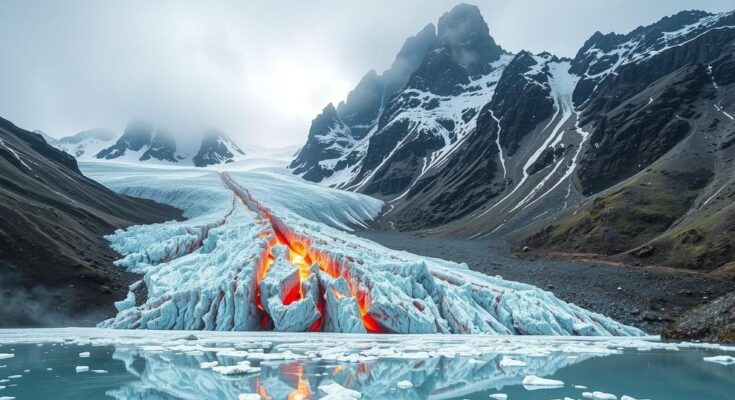A study by Colorado State University highlights the link between climate change and increased earthquake activity due to glacial retreat. The research focuses on the Sangre de Cristo Mountains, revealing that melting glaciers have led to accelerated fault movements, suggesting a direct impact of climate change on seismic processes. This underscores the importance of understanding how environmental changes influence geological dynamics.
A recent investigation conducted by researchers at Colorado State University (CSU) has established a compelling link between climate change and increased earthquake activity, particularly in the context of glacial retreat. Focusing on the Sangre de Cristo Mountains in southern Colorado, the study illustrates how the melting of glaciers, which previously suppressed fault movements, has resulted in heightened seismic activity along active faults.
Dr. Cece Hurtado, a graduate researcher at CSU, noted, “Climate change is happening at a rate that is orders of magnitude faster than we see in the geologic record.” This statement underscores the significant and rapid nature of current climatic shifts compared to historical trends. The researchers observed that as glaciers recede, the stress on tectonic faults changes, which can lead to increased slip rates of faults—a finding that adds to the limited research suggesting climate impacts on seismic activity.
Utilizing advanced techniques such as remote sensing and field data collection, the study reconstructed the historic extent of glaciers and measured their effect on fault dynamics. The results indicated that fault movement had accelerated significantly following glacial thaw, suggesting a tectonic “rebound” as the accumulated stress from ice mass was relieved. The implications of this research may inform models that predict seismic hazards in areas undergoing rapid environmental changes due to climate warming.
The implications of climate change extend beyond atmospheric alterations; recent research indicates these changes may also influence geological processes such as seismic activity. This relationship is particularly evident in mountain ranges where the retreat of glaciers has been documented. Prior to glacial melting, substantial ice mass could suppress fault movement, thereby minimizing earthquake frequency. Understanding the interplay between glacial retreat and tectonic activity is crucial in assessing seismic risks in regions with active geology, especially as global temperatures rise and glaciers continue to vanish, notably in areas such as the Himalayas and the Alps.
In summary, the study from Colorado State University provides significant insights into the relationship between climate change and increased earthquake activity. As glaciers melt, the resulting changes in stress conditions on tectonic faults can lead to more frequent seismic events. This research emphasizes the critical need for ongoing studies to better understand the geological impacts of climate change, thereby enhancing predictions of seismic hazards in affected regions.
Original Source: www.earth.com




